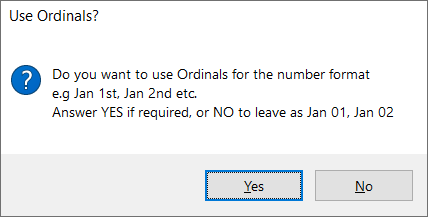Excel Formulas Adapt to New Sheets Automatically

Microsoft Excel is a powerful tool for data analysis, financial modeling, and a host of other spreadsheet-based tasks. One of its many advantages is its ability to handle complex calculations through formulas. A lesser-known yet incredibly useful feature is how Excel formulas can automatically adapt when data is moved to new sheets or when new sheets are created. This functionality can save time, reduce errors, and enhance productivity. Let's explore how Excel makes this magic happen.
The Core Principles of Excel’s Formula Adaptation

Excel’s formula adaptation primarily operates on a few core principles:
- Relative References: By default, Excel uses relative cell references. When you copy or move a formula, Excel adjusts the cell references automatically to reflect the new position.
- Absolute References: Sometimes, you need a reference to stay fixed on a particular cell regardless of where the formula is copied. This is where dollar signs ($) come into play, locking the row and/or column.
- Automatic Recalculation: Excel recalculates formulas automatically when any data change is made, ensuring that your calculations are always up to date.
How Excel Handles Sheet References

When you reference cells across different sheets in Excel, the formula includes the sheet name before the cell reference. Here’s how it adapts:
- When a formula references a cell on another sheet, the reference includes the sheet name. For example, if Sheet1 references a cell on Sheet2, it might look like
=Sheet2!A1. - If you move or copy the formula to another sheet, Excel adjusts the sheet name automatically. If you move it from Sheet1 to Sheet3, the formula might become
=Sheet2!A1in Sheet3. - This automatic adjustment extends to copying formulas to newly inserted sheets or when sheet names are changed.
Steps to Experience Formula Adaptation

To see how Excel’s formula adapts, follow these steps:
- Create a simple formula in a cell, like
=A1+A2, in Sheet1. - Copy and paste this formula into a different cell within Sheet1 to see how it adjusts the cell references.
- Add a new sheet (Sheet2), input some data, and reference it from Sheet1, e.g.,
=Sheet2!A1. - Now, copy the formula from Sheet1 to Sheet3, and observe how Excel updates the references.
- Change the name of Sheet2 and check how Excel updates the formula to reflect the new sheet name.
💡 Note: If you want a cell reference to always point to the same location no matter where the formula is moved, use absolute references with $ signs, like =Sheet2!$A$1.
Troubleshooting Common Issues

Sometimes, formula adaptation can lead to confusion. Here are common issues and their resolutions:
- Broken Links: If a sheet is renamed or deleted, references might break. Regularly check for and update broken links.
- Incorrect Sheet Reference: Ensure the correct sheet names are used in your formulas, especially in large workbooks.
- Manual Recalculation: If formulas don’t update, check if Excel is set to manual calculation mode.
Leveraging Excel’s Flexibility

To truly harness Excel’s flexibility, here are some practices to adopt:
- Use Names: Define names for cells or ranges to make formulas more intuitive and easier to manage across sheets.
- Consistent Structure: Keep your sheets’ structure consistent, especially if you intend to use formulas that reference multiple sheets.
- Indirect Function: Use the
INDIRECTfunction for dynamic sheet references, like=INDIRECT(“Sheet”&A1&“!A1”)where A1 contains the sheet number.
💡 Note: Remember, while Excel formulas adapt, it's wise to periodically review and update complex formulas to ensure they align with your intended calculations, especially in evolving projects.
In wrapping up our exploration of Excel formulas adapting to new sheets, it's clear that this feature is a game-changer for efficiency and accuracy in spreadsheet management. By understanding how Excel handles relative and absolute references, as well as sheet references, you can leverage Excel's automatic adaptation to streamline your workflow. Remember to use best practices like naming ranges, keeping a consistent structure, and occasionally reviewing complex formulas to ensure they're still meeting your needs.
How does Excel handle formula references when sheets are renamed?

+
Excel automatically updates all formula references when sheets are renamed to reflect the new name, ensuring all inter-sheet references remain intact.
Can Excel formulas adapt when a sheet is deleted?

+
When a sheet is deleted, formulas referencing that sheet will display a #REF! error. You’ll need to manually update or re-link these formulas.
What happens if I move a formula with absolute references?

+
If you move a formula with absolute references, the references will not change; they will continue pointing to the exact same cells or ranges regardless of the formula’s new location.
How do I ensure my Excel workbook’s formulas update when new sheets are added?

+
Excel automatically updates formulas when new sheets are inserted if the references use the appropriate sheet names. However, if you need dynamic sheet references, consider using the INDIRECT function or range names.



